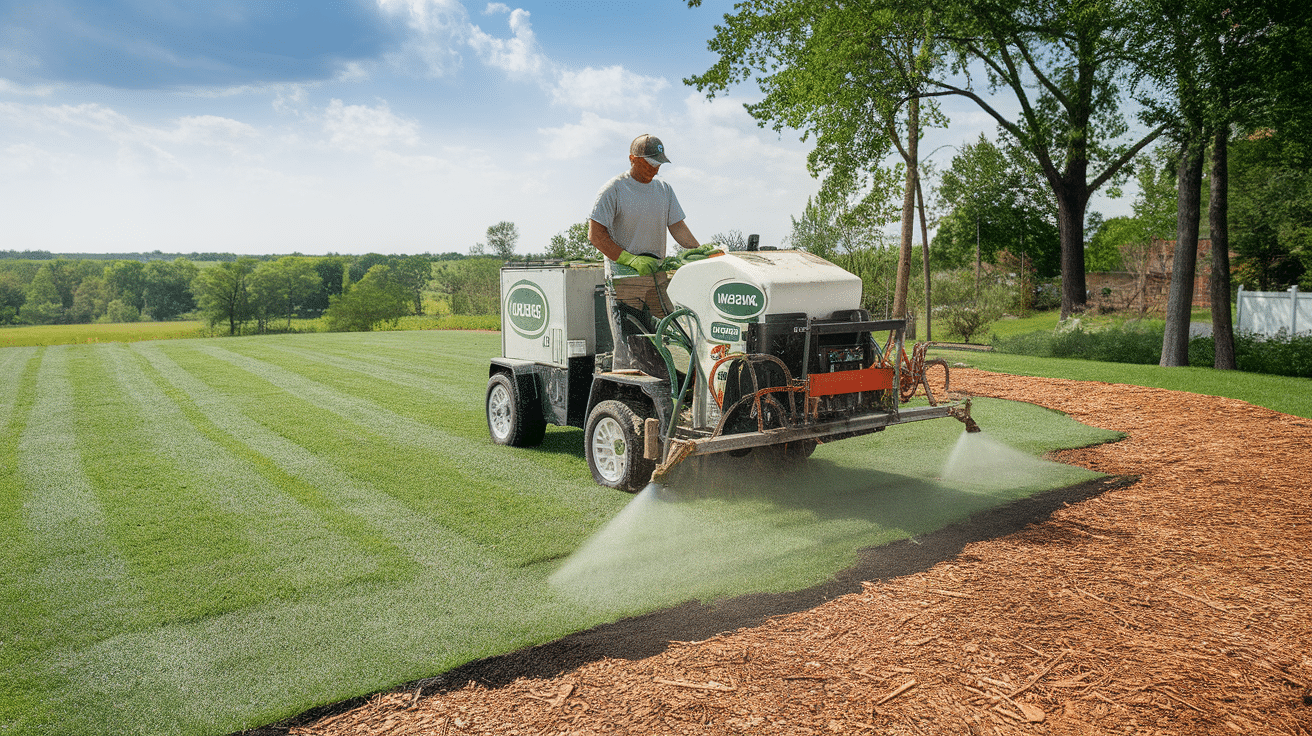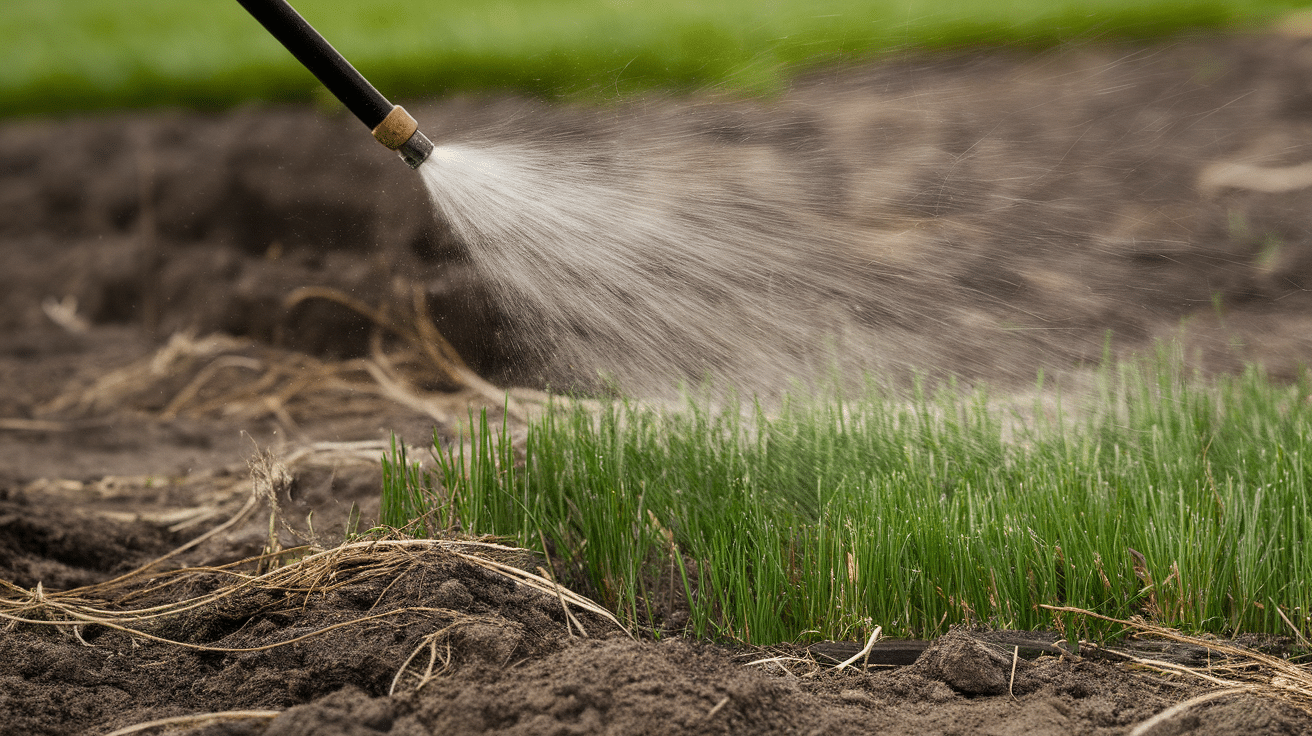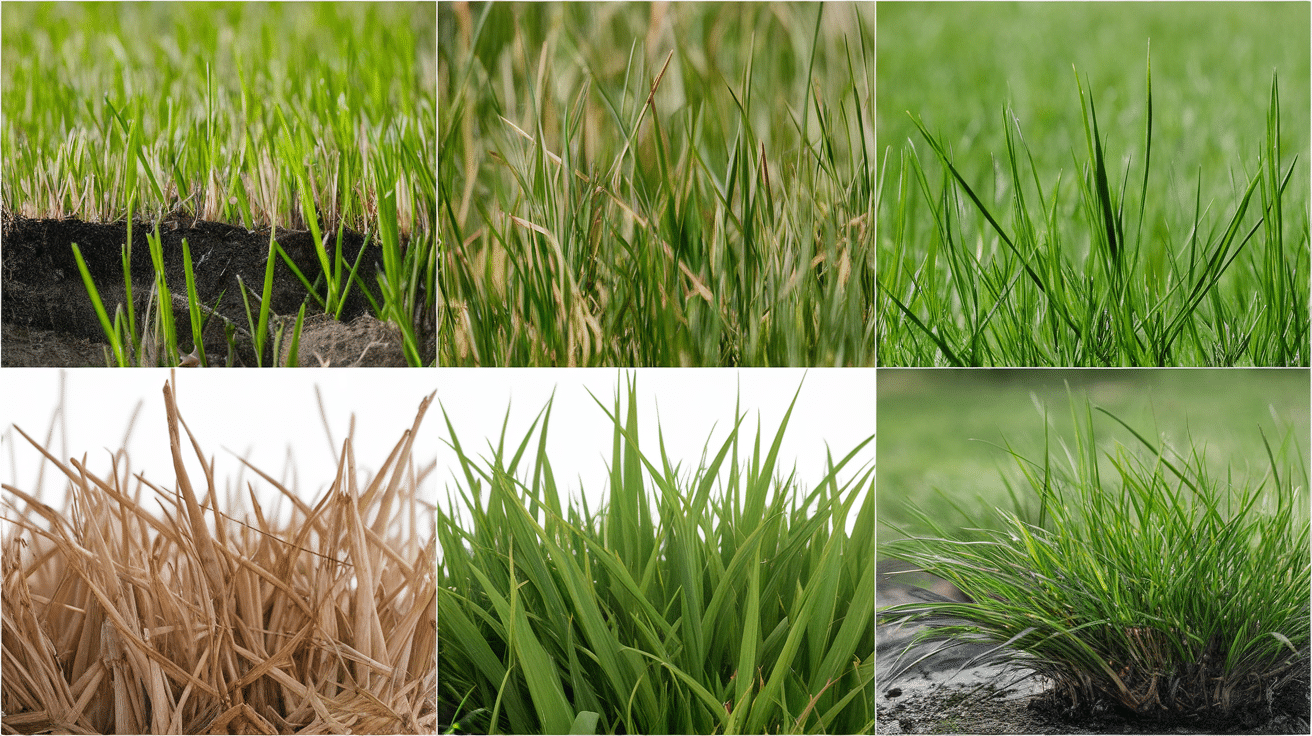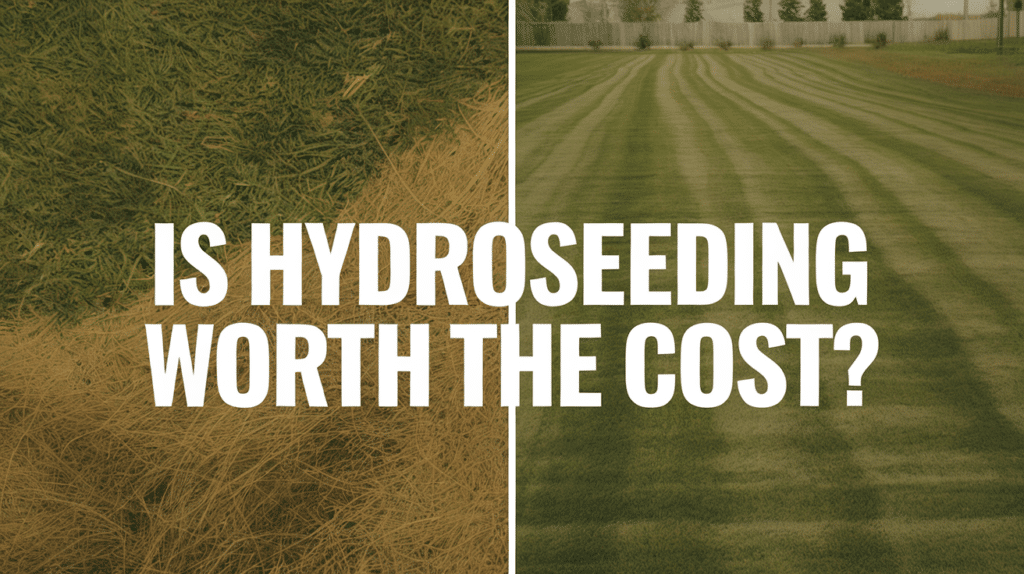Hydroseeding is a popular method for planting grass, especially for larger lawns or areas that are hard to reach. It involves spraying a mix of grass seed, mulch, and water onto the soil, helping grass grow faster and more evenly.
One of the best things about hydroseeding is that it’s often cheaper and quicker than traditional seeding or sod. But how much does it actually cost?
The price of hydroseeding can depend on a few different things, like the size of your lawn, where you live, and the type of grass you want to plant. In this blog, I’ll discuss the average cost of hydroseeding, what factors affect the price, and how you can save money in the process.
What is Hydroseeding?

Hydroseeding is a method of planting grass that uses a special spray mix. Instead of spreading seeds by hand, hydroseeding involves spraying a mixture of grass seed, mulch, water, and sometimes fertilizer onto the soil.
The mulch helps keep the seeds moist and protected while they begin to grow. This method is especially useful for larger lawns, hills, or hard-to-reach areas where traditional seeding might be difficult.
Hydroseeding is faster and more efficient than regular planting, and it helps the grass grow evenly. It’s also a great choice if you want your lawn to look lush and green quickly. Plus, it’s usually more affordable than laying sod!
Benefits of Hydroseeding
Hydroseeding is a great option for a healthy, green lawn. It has several benefits and can be very helpful in the long run.
1. Faster Growth: Hydroseeding helps grass grow quicker than traditional seeding. The mixture of seeds, mulch, and water gives the seeds the perfect start, leading to faster growth.
2. Even Coverage: The spray mix covers the entire area evenly, so you don’t have to worry about spots with too many or too few seeds. This gives you a uniform lawn that looks great.
3. Cost-Effective: Compared to laying sod or buying individual grass plugs, hydroseeding is often more affordable, especially for larger areas.
4. Better Protection for Seeds: Mulch helps protect the seeds from the sun and wind, keeping them moist and giving them the best chance to grow.
5. Eco-Friendly: Hydroseeding uses less water than traditional methods like sprinklers, making it a more water-efficient choice for your lawn.
Overall, hydroseeding is an efficient, cost-effective, and eco-friendly way to create a lush lawn.
How Much Does Hydroseeding Cost?
The cost of hydroseeding can vary depending on several factors, such as the size of your lawn and where you live.
On average, hydroseeding costs between $0.06 and $0.20 per square foot. This means if you have a 1,000-square-foot lawn, the cost could be anywhere from $60 to $200. For larger lawns or more complex areas, the price per square foot can go down, which means the bigger the area, the cheaper it gets per square foot.
If you’re planning to seed an entire acre of land, hydroseeding could cost between $1,500 and $3,000. The price also depends on the type of grass seed you choose, the condition of the soil, and any extra work needed to prepare the land. It’s always a good idea to get a few quotes from different companies to make sure you’re getting the best deal!
Factors That Affect Hydroseeding Cost

The cost of hydroseeding can vary depending on a few important factors. Here are the main things that can influence the price:
1. Lawn Size: The bigger your lawn, the more it will cost to seed. However, if you have a large area, the price per square foot may be lower. So, the bigger your lawn, the more you might save per square foot!
2.Location: Where you live can impact the cost. Areas with higher labor costs or transportation expenses will usually have a higher price. For example, hydroseeding might cost more in big cities than in smaller towns.
3. Type of Grass Seed: Different types of grass have different costs. For example, Bermuda grass might be cheaper than fescue or bluegrass. The quality of the seed can also affect the price.
4. Soil Condition: The price will go up if your soil needs extra preparation, like leveling, fertilizing, or adding soil amendments. Healthy soil that’s ready for seeding costs less to work with.
5. Job Complexity: If your lawn has difficult areas, like steep slopes or hard-to-reach spots, the job will cost more. The easier it is to access and seed, the cheaper it will be.
6. Additional Services: Some hydroseeding companies offer extra services, like watering or lawn care after the hydroseeding. These services can increase the overall cost but may be worth it for the health of your lawn.
7. Time of Year: The season can also affect the price. Hydroseeding is usually more expensive during peak seasons (like spring or early summer) when demand is high. Off-season prices might be lower.
By considering these factors, you can better estimate the cost of hydroseeding your lawn and plan accordingly. It’s always a good idea to get a few quotes from different companies to find the best deal!
Hydroseeding Cost Per Square Foot
The cost of hydroseeding usually ranges from $0.06 to $0.20 per square foot. This means that if you have a small area to seed, like a small backyard, the cost will be closer to the lower end of the range. For a 1,000-square-foot lawn, this could cost you anywhere from $60 to $200.
The price per square foot can vary depending on a few things, like:
-
Where you live: Some areas have higher labor and transportation costs, making hydroseeding more expensive.
-
Soil preparation: If your lawn needs extra work, like leveling or adding fertilizers, it may cost more.
-
The type of grass seed: Certain types of grass can cost more, so this will also affect the price.
For larger lawns, the price per square foot can go down, making hydroseeding more affordable for big spaces. It’s always a good idea to get a few quotes to make sure you’re getting the best price!
Hydroseeding for Different Types of Grass

Hydroseeding works well for various types of grass, but the cost and results can vary depending on the type of grass seed you choose.
1. Fescue Grass
-
Best for: Cool climates, shady areas, and lawns that need to grow quickly.
-
Cost: Fescue is one of the more affordable grass types for hydroseeding.
-
Benefits: Fescue grows well in cooler weather and is fairly drought-tolerant. It’s a great choice for lawns with partial shade.
-
Considerations: It may need more water during the hot summer months.
2. Kentucky Bluegrass
-
Best for: Cool climates with full sun.
-
Cost: This is typically a more expensive option for hydroseeding.
-
Benefits: Kentucky Bluegrass is known for its beautiful, lush green color and soft texture. It grows well in full sunlight and creates a thick, healthy lawn.
-
Considerations: It requires a bit more maintenance and may not do well in very hot or dry areas.
3. Bermuda Grass
-
Best for: Hot climates and full sun.
-
Cost: Bermuda grass is often on the more affordable side for hydroseeding.
-
Benefits: Bermuda is heat-tolerant and very drought-resistant, making it a great option for areas with high temperatures. It also grows quickly.
-
Considerations: Bermuda may not grow well in cooler climates and needs full sun to thrive.
4. Ryegrass
-
Best for: Cool seasons and areas that need quick grass growth.
-
Cost: Ryegrass is usually moderately priced for hydroseeding.
-
Benefits: Ryegrass is often used as a temporary cover or for overseeding in cooler weather. It grows quickly and provides a nice green cover.
-
Considerations: It doesn’t handle heat well and may go dormant in the summer.
5. Zoysia Grass
-
Best for: Warm climates and low-maintenance lawns.
-
Cost: Zoysia is on the more expensive side for hydroseeding.
-
Benefits: Zoysia grass is heat-tolerant, drought-resistant and requires less water than other grass types. It grows slowly but forms a dense lawn.
-
Considerations: Zoysia may take longer to establish and requires some patience.
6. Centipede Grass
-
Best for: Warm climates with sandy soil.
-
Cost: Centipede grass is usually affordable for hydroseeding.
-
Benefits: Centipede grass is low-maintenance and drought-tolerant. It’s also great for areas with sandy or acidic soil.
-
Considerations: It doesn’t handle heavy foot traffic well and may not be as thick as other grass types.
Hydroseeding can work with many different types of grass, but picking the right one for your area will help your lawn grow healthy and strong.
How to Save on Hydroseeding
Hydroseeding is a cost-effective way to plant grass, but there are still ways to save money on the process.
1. Get Multiple Quotes: Don’t settle for the first price you get. Ask for quotes from a few different hydroseeding companies. This will help you compare prices and find the best deal.
2. Seed a Larger Area: The more area you hydroseed, the cheaper it will be per square foot. If you have a larger lawn, you may get a better rate. Consider doing all of your lawn at once to save money on smaller sections.
3. Prepare the Lawn Yourself: If you can do some of the work before the hydroseeding company arrives, like removing weeds or leveling the soil, you could save money on labor costs.
4. Choose a Standard Grass Seed: Some types of grass seed can be more expensive than others. If you go with a standard grass seed (like fescue or ryegrass), it could be more affordable than using premium seed types.
5. Schedule During the Off-Season: When demand is lower, prices for hydroseeding can be lower in the off-season, like in late fall or early spring. Scheduling during these months could help you save money.
6. Limit Additional Services: Some companies offer extra services, like watering or fertilizing after hydroseeding. While these can be helpful, they can also add to the cost.
7. Look for Special Deals or Discounts: Some hydroseeding companies offer seasonal promotions or discounts for larger projects. Asking if any deals are available can lower your costs.
By following these tips, you can keep the cost of hydroseeding affordable while still getting the beautiful lawn you want. Always do your research and plan to make sure you’re getting the best deal!
Hydroseeding Maintenance: How to Care for Your Lawn
After hydroseeding, proper lawn care is important to help the grass grow healthy and strong.
1. Keep the Lawn Moist
-
Watering is key to successful hydroseeding. Right after hydroseeding, you’ll need to water the area frequently to keep the seed and mulch mix moist. This helps the seeds germinate and start growing.
-
For the first few weeks, water your lawn at least 2-3 times a day for short periods to keep the surface moist.
-
Once the grass starts to grow, you can reduce watering to once a day and then to every other day as the grass matures.
2. Don’t Overwater
-
While it’s important to keep the soil moist, overwatering can lead to problems like mold or fungus. Make sure the water drains well and doesn’t pool on the surface.
-
Ensure your lawn is well-drained to avoid waterlogging, which can harm the grass.
3. Wait for Grass to Grow
-
Depending on the type of grass you chose and the weather conditions, it can take 7-21 days for the grass to start showing signs of growth.
-
Patience is important. Avoid walking or playing on the lawn during this time, as it can damage the delicate new grass.
4. Mow When the Grass is Ready
-
Once your grass reaches about 3-4 inches tall, you can begin mowing it. Be sure to set the mower to a high setting to avoid cutting the grass too short.
-
Regular mowing helps the grass become thicker and promotes healthy growth. However, avoid cutting more than one-third of the grass height at a time.
5. Avoid Heavy Foot Traffic
- Newly hydroseeded lawns are delicate. Try to keep foot traffic to a minimum while the grass is growing. Walking or playing on the grass too soon can damage the seeds or young plants, hindering their growth and making it harder for the grass to establish itself.
- Allowing the grass to grow undisturbed for a few weeks will help it develop a strong root system and become more resilient.
6. Fertilize When Needed
-
After a few weeks, you may want to fertilize your hydroseeded lawn to encourage healthy growth.
-
Use a slow-release fertilizer with the right balance of nitrogen, phosphorus, and potassium. Be careful not to over-fertilize, as it can burn the grass.
7. Watch for Weeds
-
While hydroseeding helps grass grow quickly, weeds can sometimes appear. You may need to spot-treat or pull weeds by hand, especially in the early stages.
-
Avoid using harsh chemicals on young grass, as they can damage the new lawn.
8. Keep an Eye on the Weather
-
Pay attention to the weather conditions. Hot, dry weather can dry out the grass, while heavy rain can wash away seeds. If the weather is extreme, adjust your watering schedule to help the lawn survive.
-
If necessary, protect the lawn from wind or extreme sun by using temporary shade or barriers.
Caring for a hydro-seeded lawn takes a bit of attention in the early stages, but with proper watering, mowing, and light maintenance, your grass will thrive. Be patient and give the grass time to establish itself, and soon, you’ll have a beautiful, lush lawn to enjoy!
Conclusion
Hydroseeding is a fast, cost-effective way to create a beautiful, healthy lawn. With the right care and attention, you can enjoy thick, green grass much quicker than with traditional seeding.
The key to success is proper maintenance—keeping the lawn moist, avoiding overwatering, and being patient as the grass grows. Once your lawn is established, regular mowing, watering, and fertilizing will help it thrive.
Don’t forget to watch for weeds, and avoid heavy foot traffic while the grass is still young. Hydroseeding might take some effort in the beginning, but the results are well worth it. Whether you’re growing a lawn from scratch or enhancing an existing one, hydroseeding provides a great way to get a lush, green yard without the high cost of sod.

